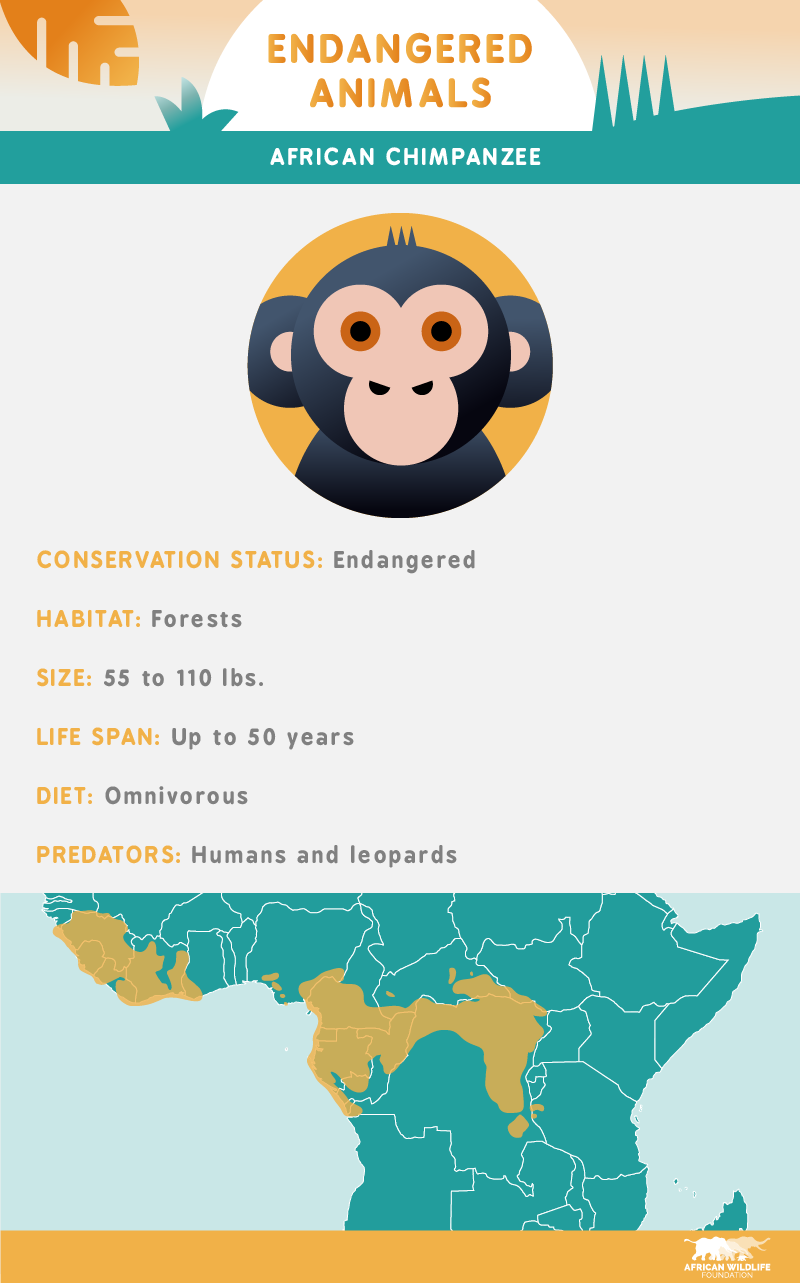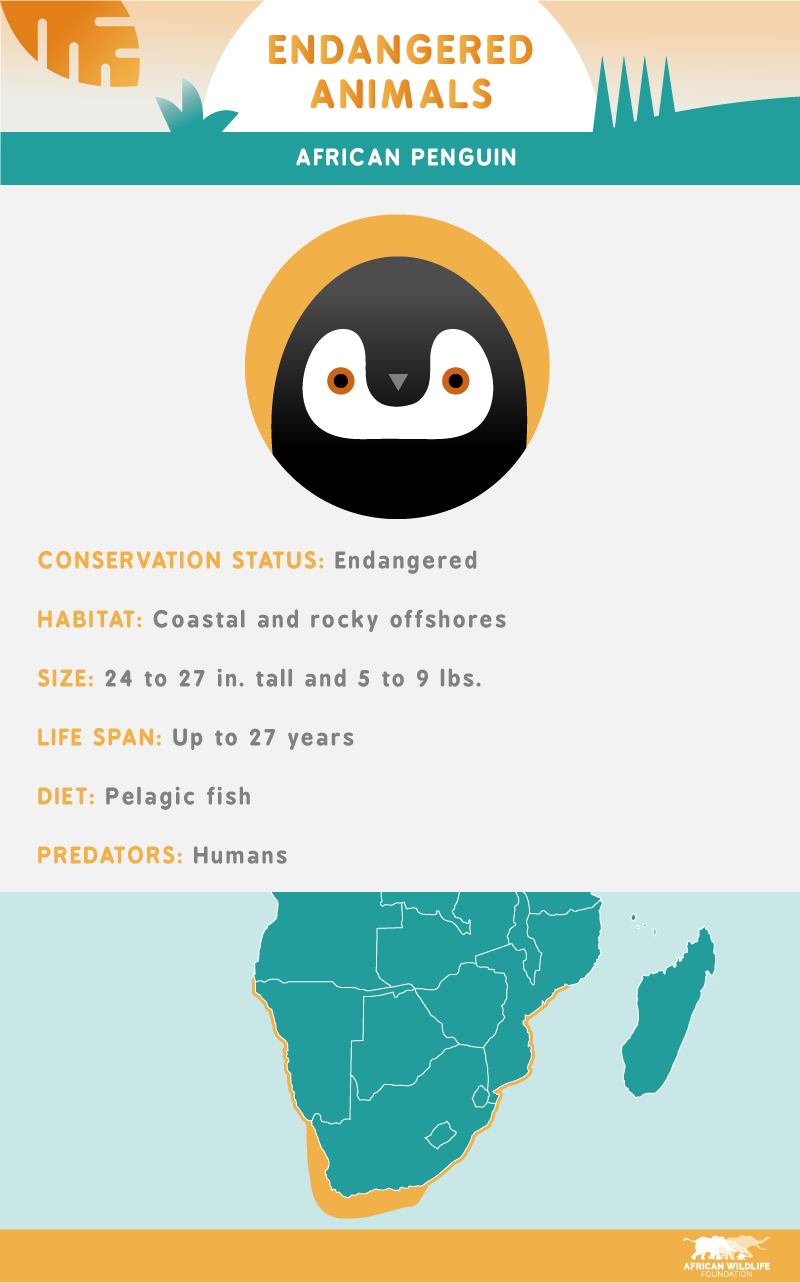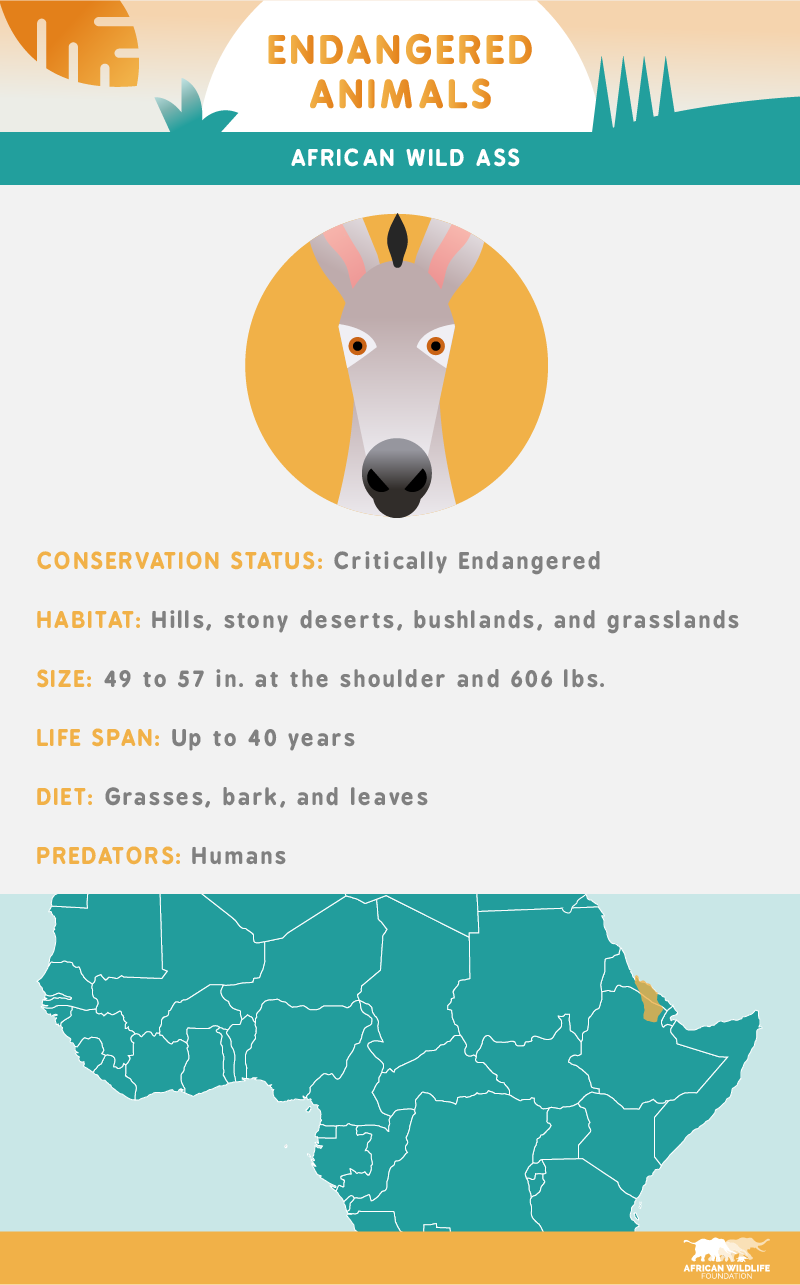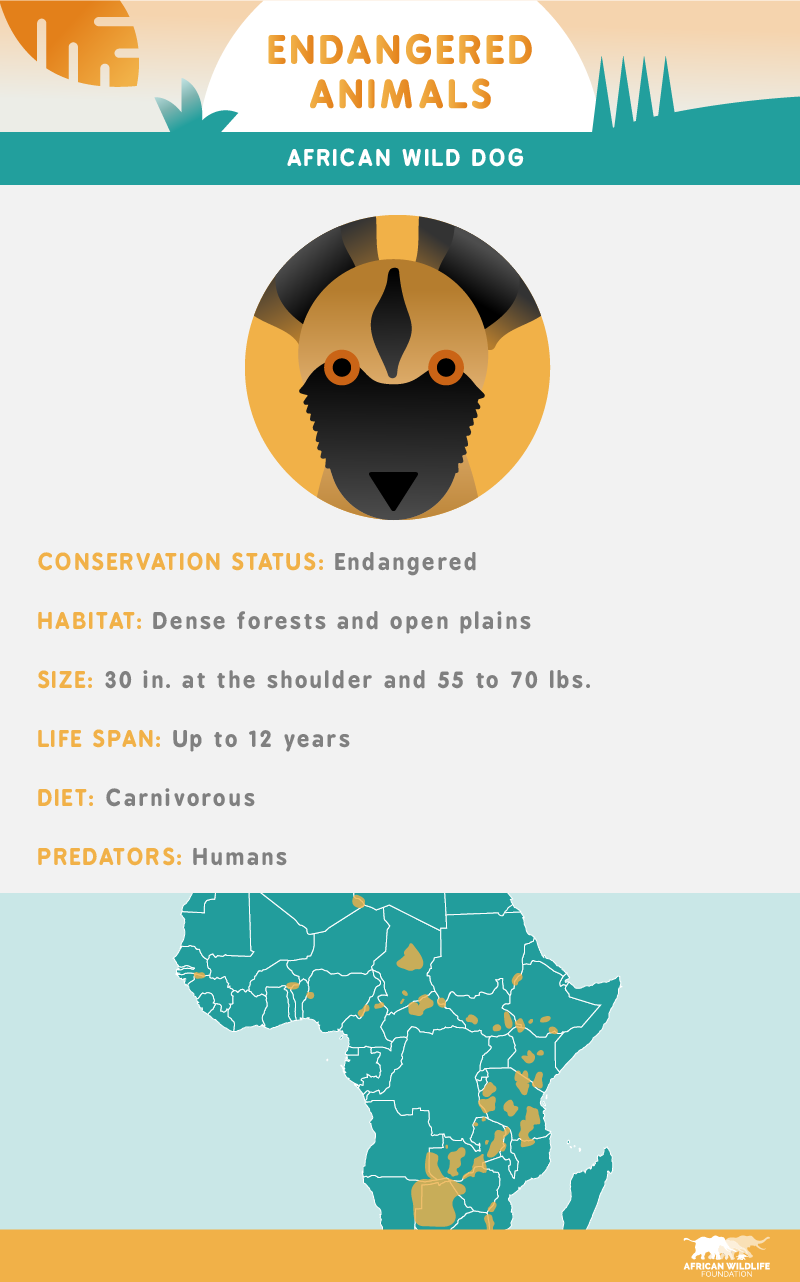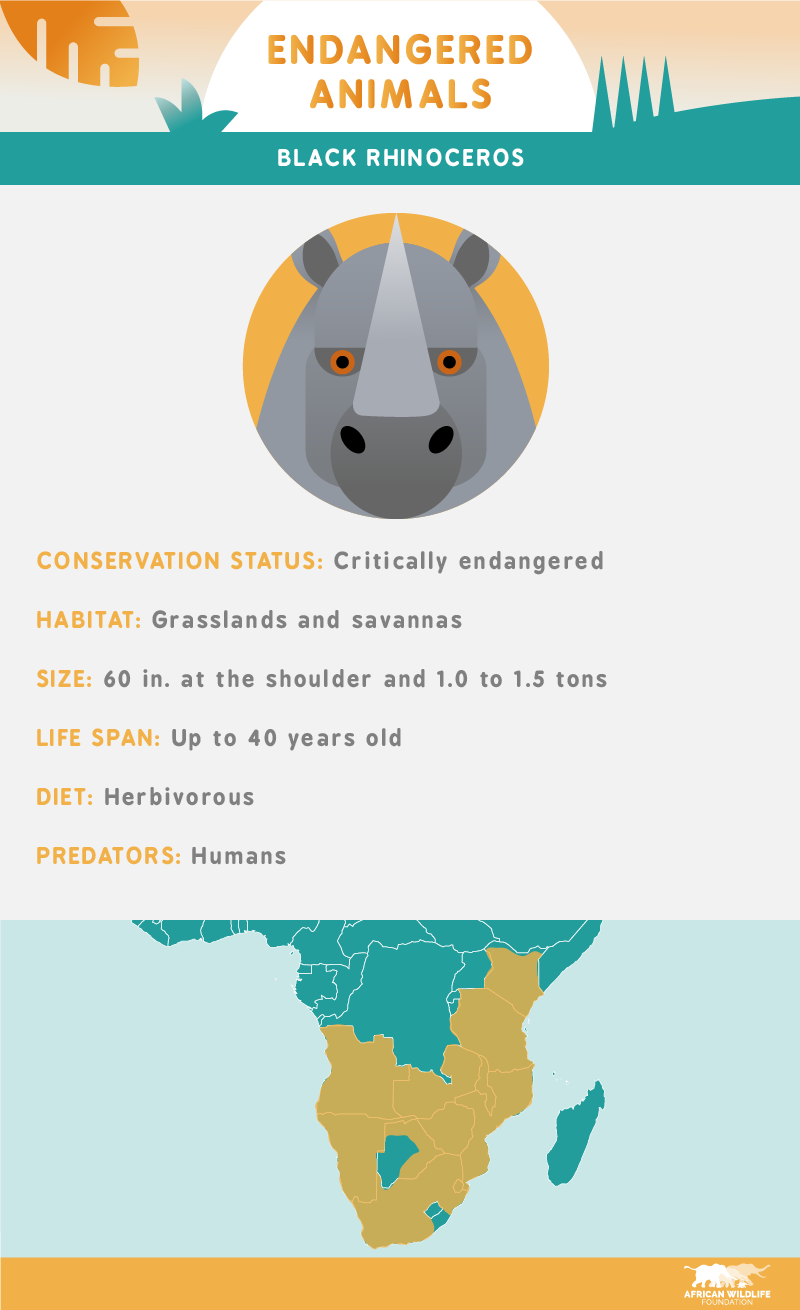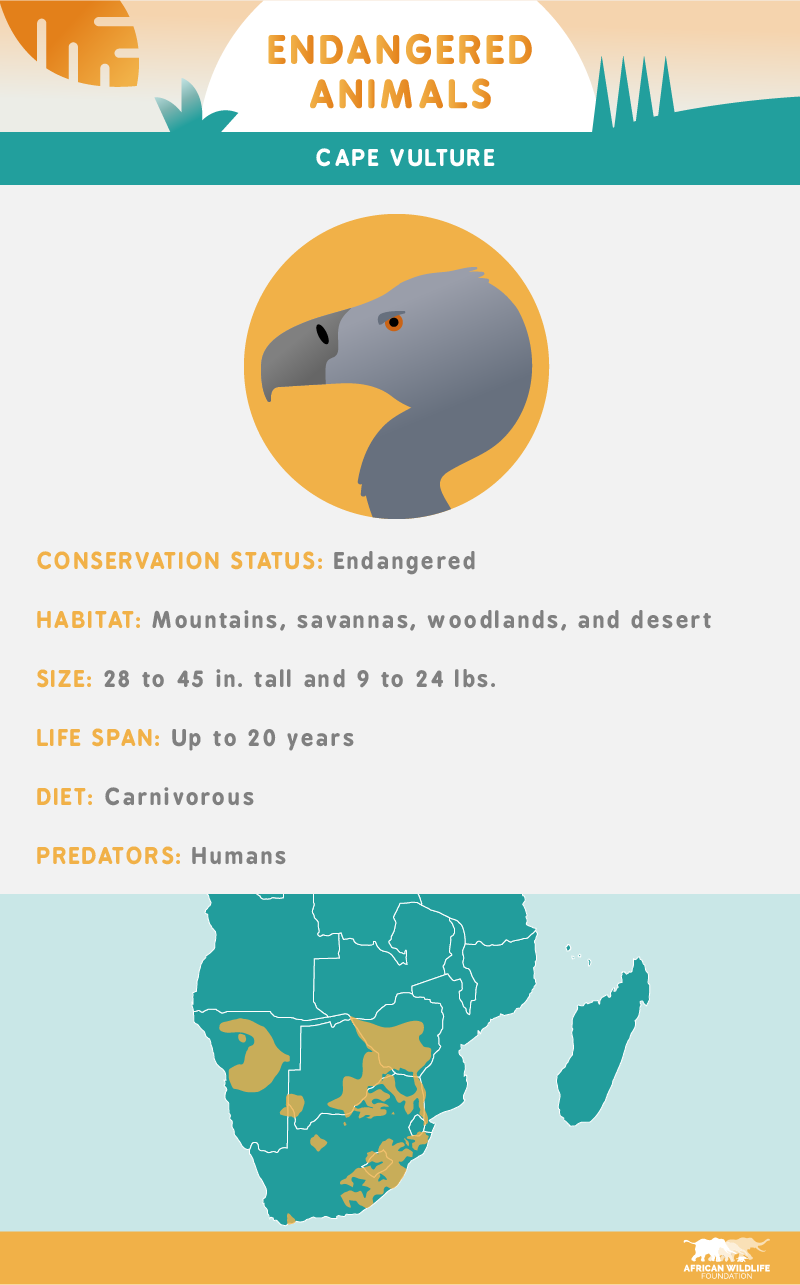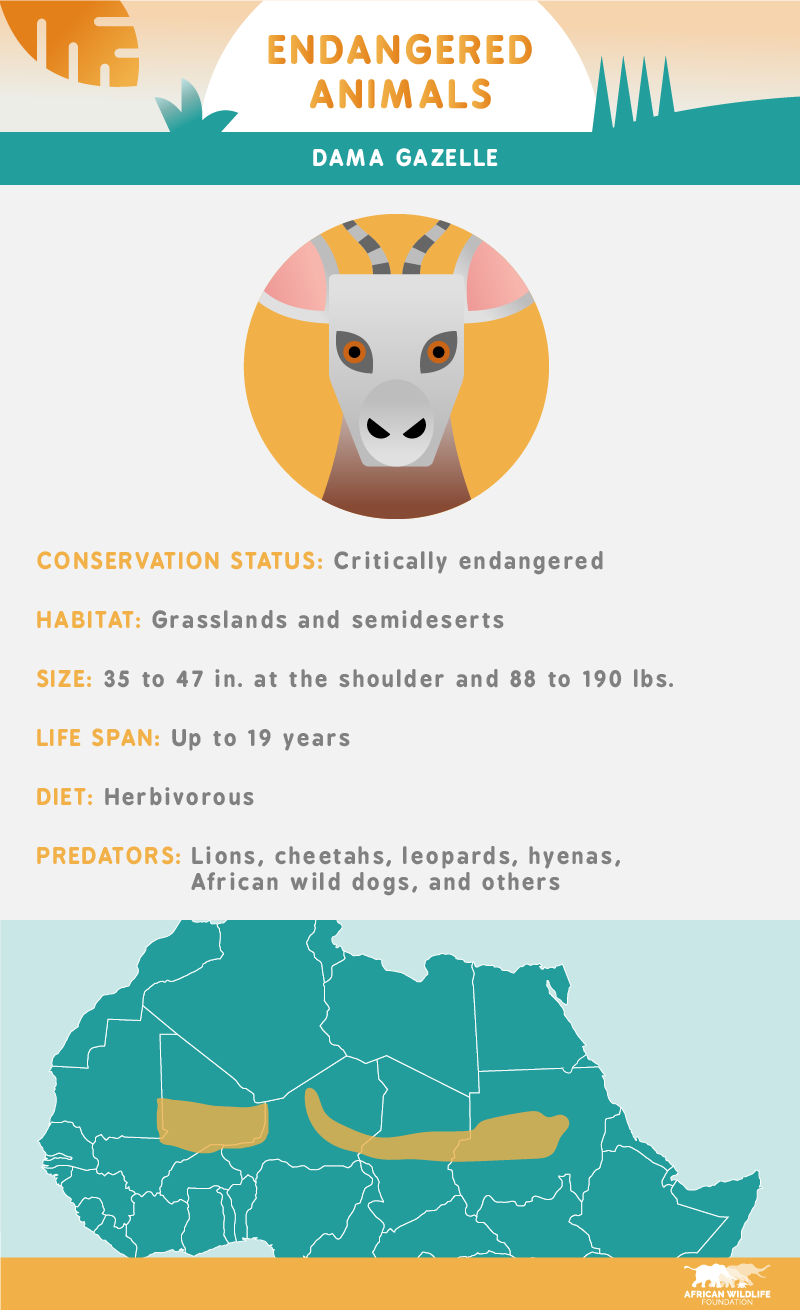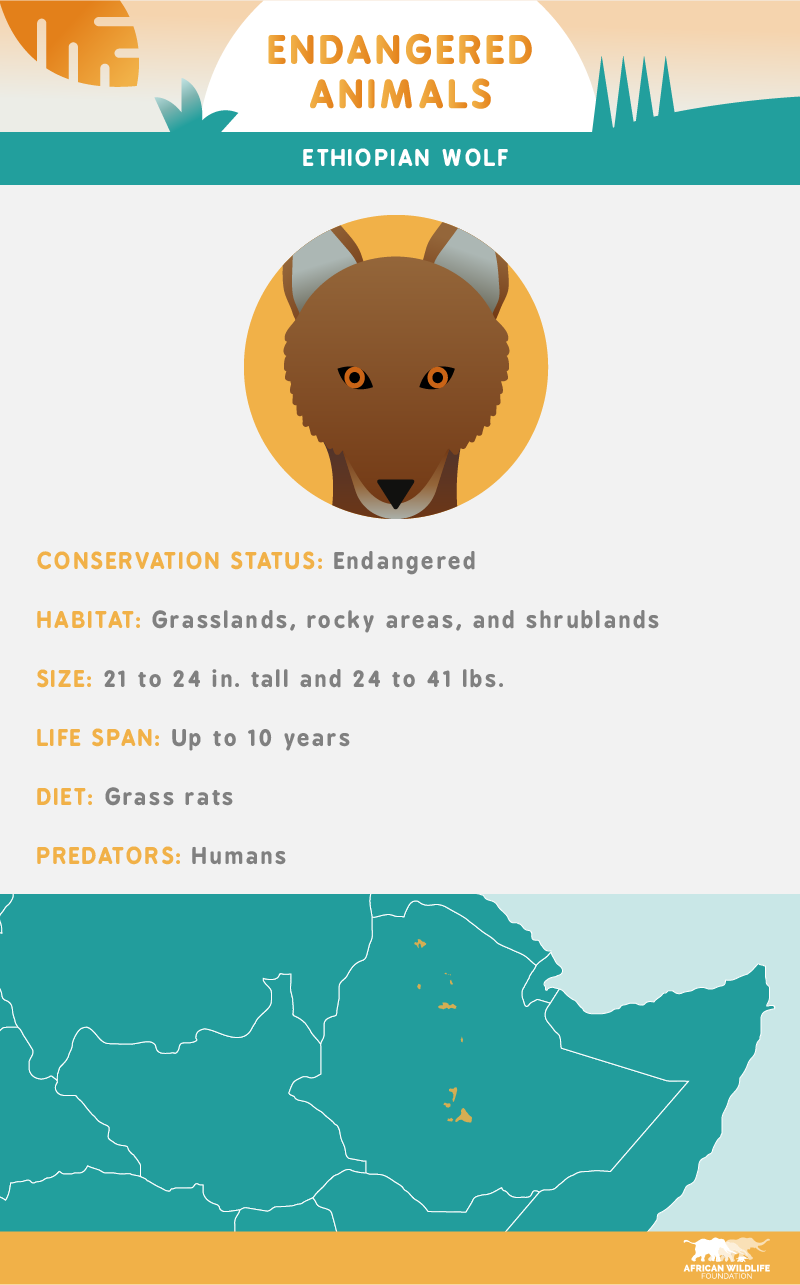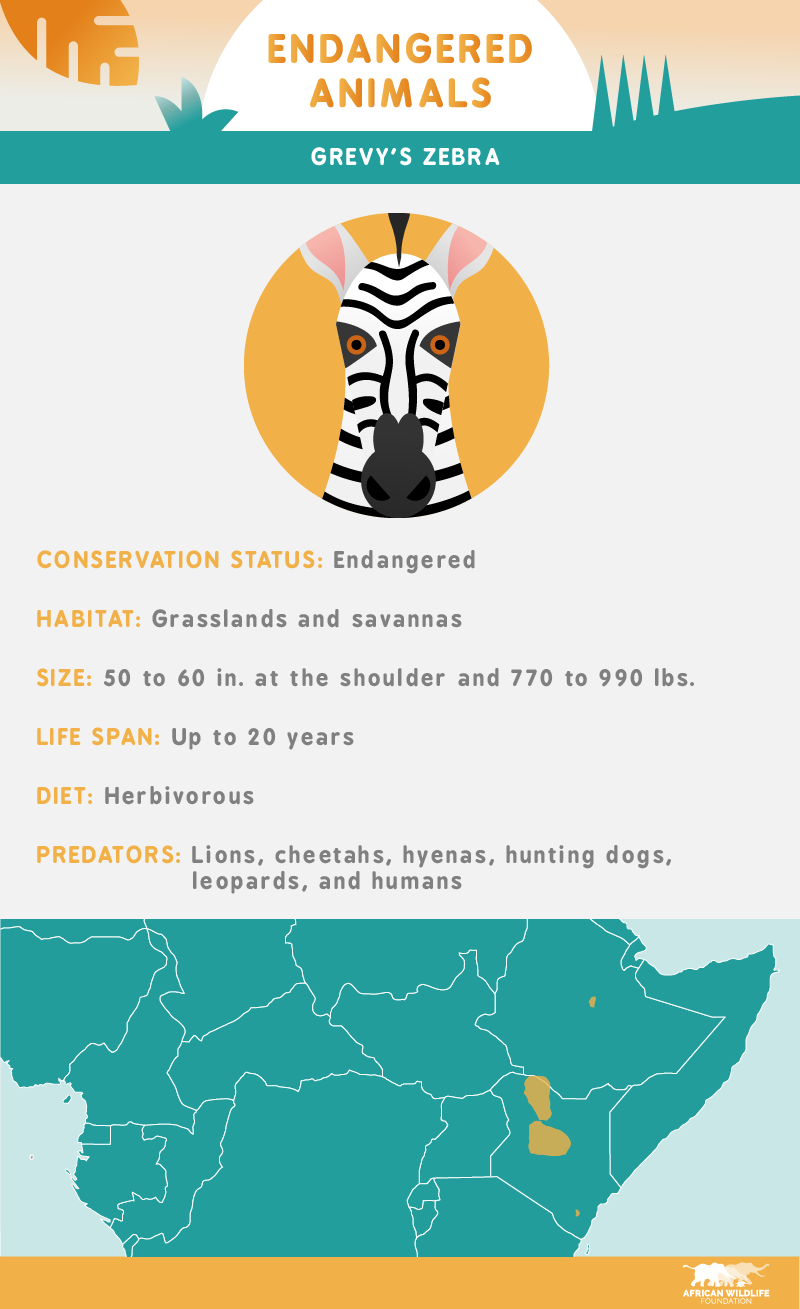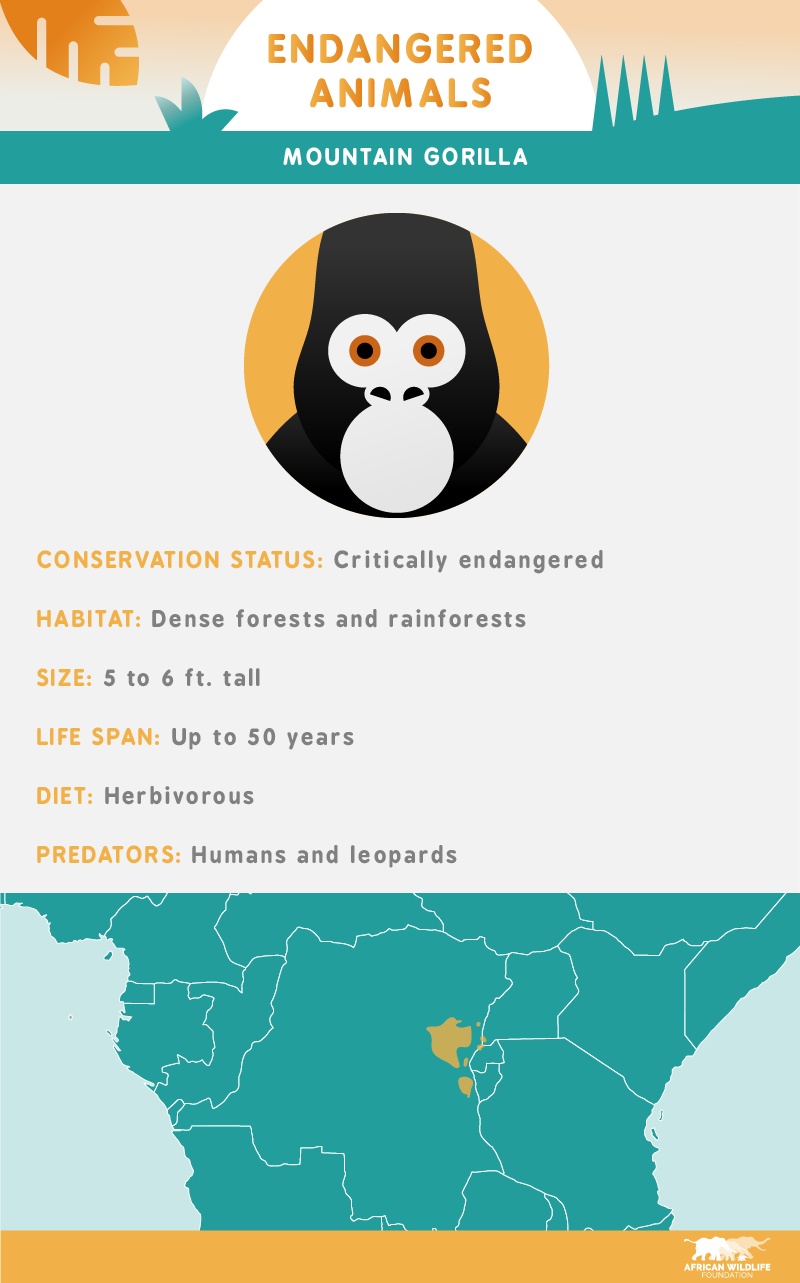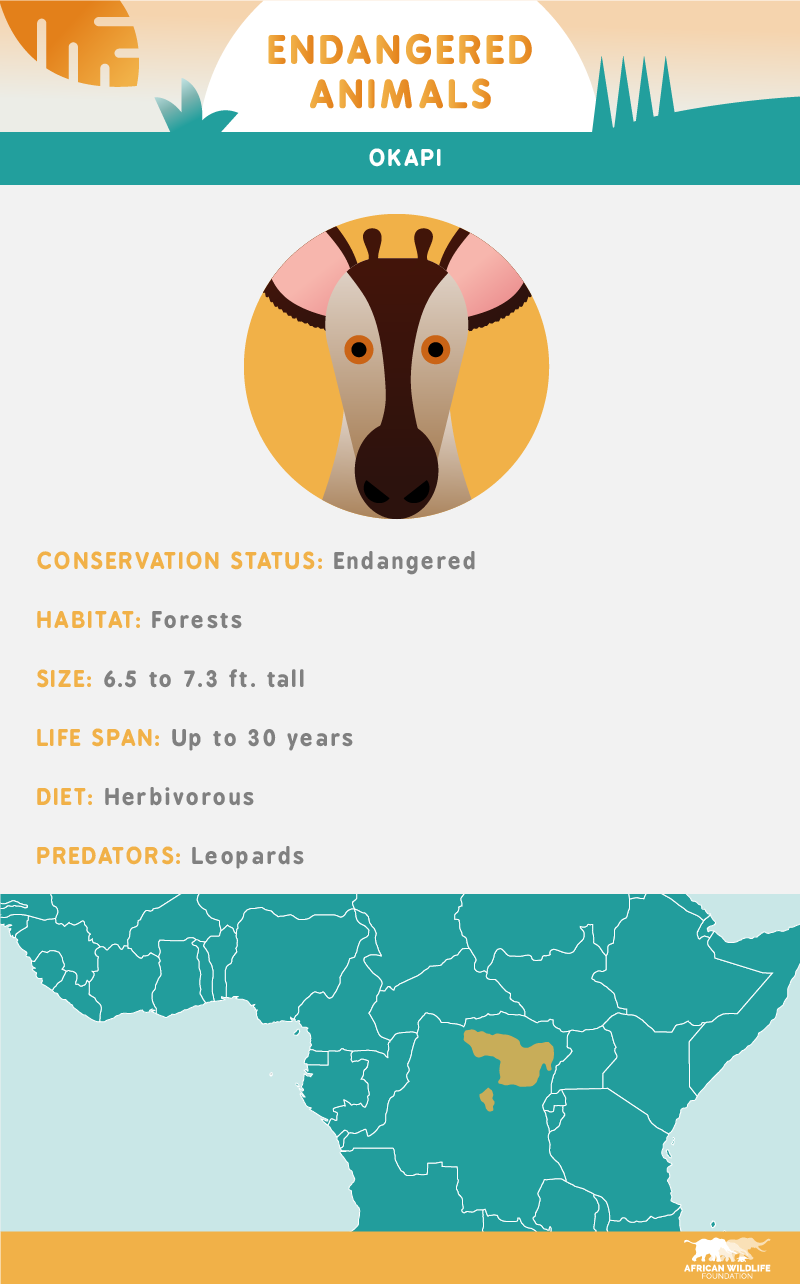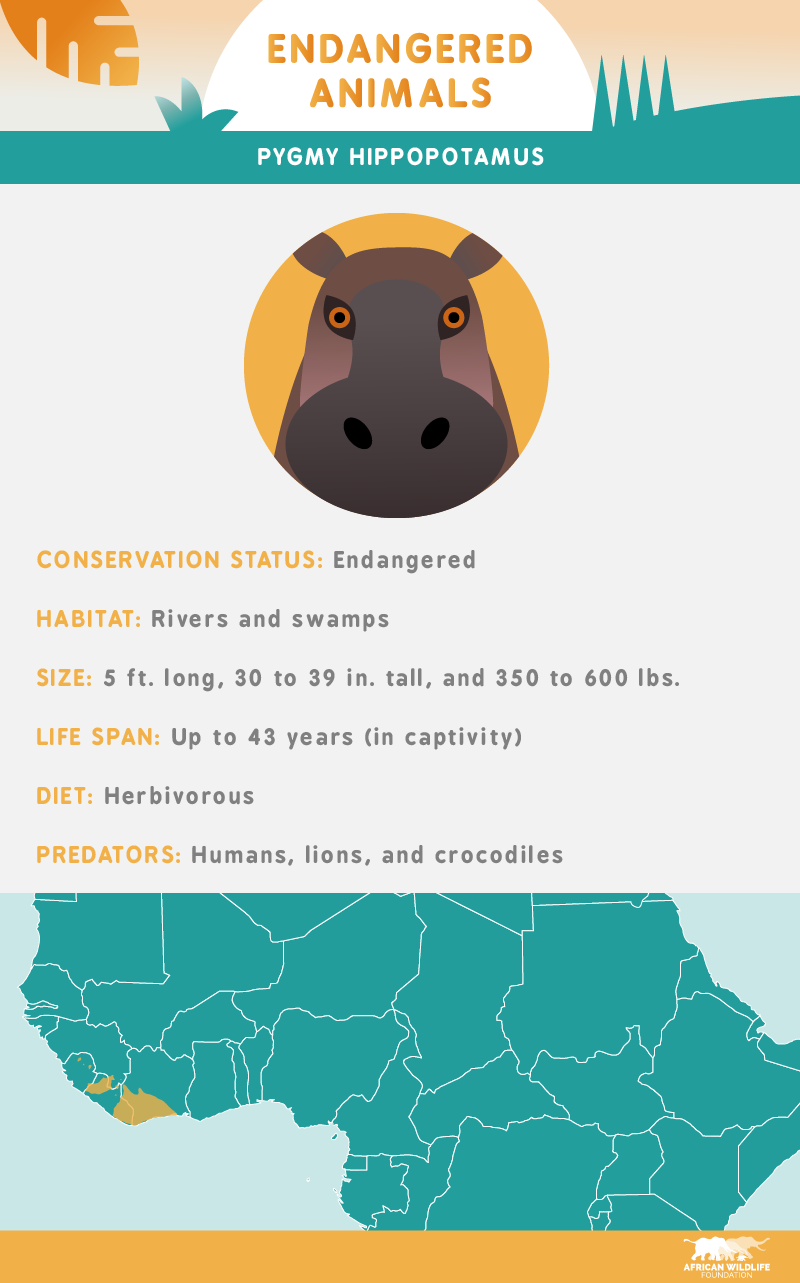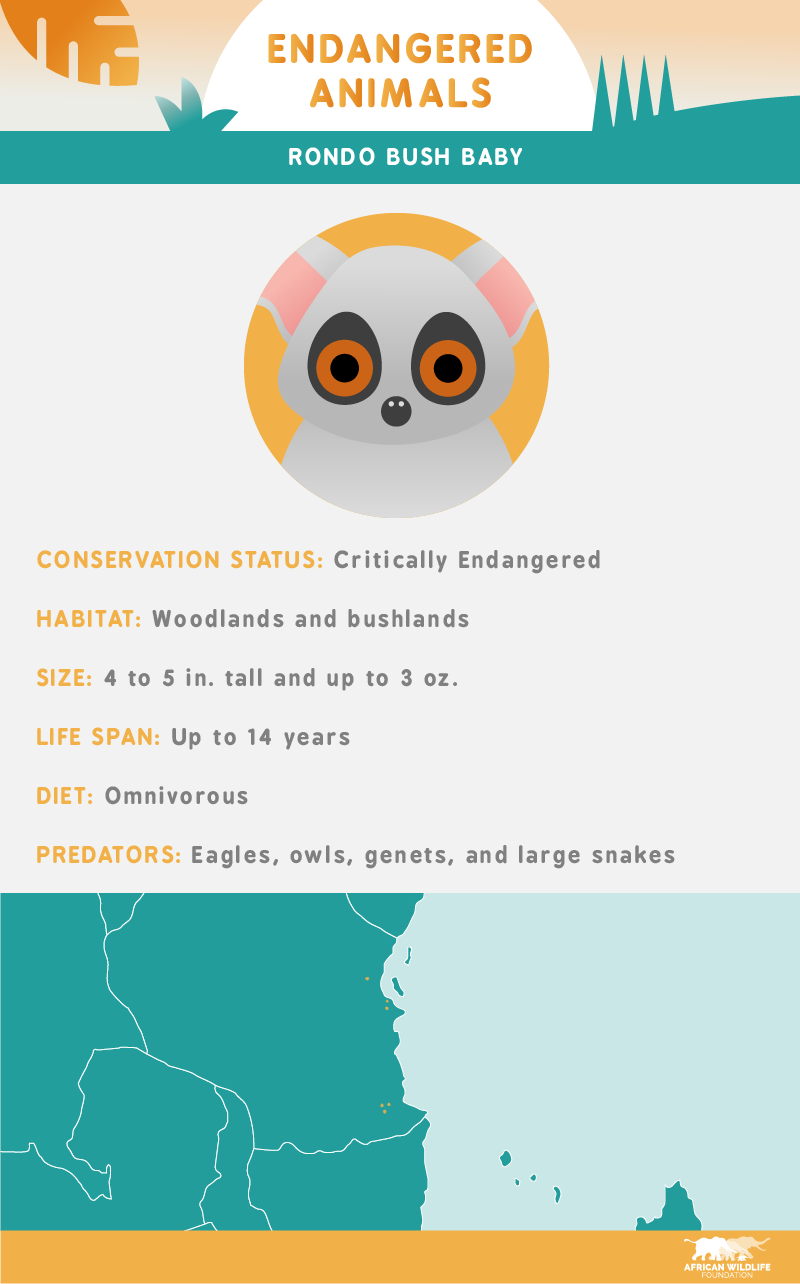Across the world, more than 25,000 species of plants and animals are currently threatened – a number that continues to grow each year.
According to some experts, certain species of cheetah, northern white rhinos, giant tusked bull elephants, and some great apes are just a few animals that could go extinct shortly.
To help mitigate the threats these animals often face, many global organizations work tirelessly to help reduce the number of animals threatened by human activity (including poaching), habitat fragmentation, and climate change. At the African Wildlife Foundation, 87 percent of all donations are used to fund programs designed to empower African communities to protect and conserve precious lands and animals in danger of extinction. We surveyed 1,000 Americans about these conservation efforts and how an animal’s appearance affected their support or donation. Continue reading to see whether some endangered animals earn more sympathy in America than others.
Positive Protection

Despite recent political debate on the subject, when asking Americans how they felt about giving money to help prevent losing animals forever to extinction – the sentiment was clear. One hundred percent of Americans claim they would donate to conservation efforts, and 98 percent said they supported conservation efforts to protect endangered species.
While virtually everyone may feel a certain level of empathy toward animals on the brink of destruction, how to proceed can sometimes be challenging. In 2017, a federal court rejected the request to place a certain species of bald eagle (the Sonoran Desert) on the endangered species list, despite its declining numbers. More than 100 million acres in the U.S. are currently government-protected for conservation purposes, but these areas alone may not be sufficient to prevent the loss of some of the country’s unique and celebrated plants and animals.
In Africa, where some of the world's most heavily poached species live, the threat of extinction has not decreased the global wildlife trafficking trade. Rhino horn, elephant ivory, pangolin scales, and other illicit wildlife products continue to be coveted as medicinal cure-alls and status symbols.
The Biggest Threats to Endangered Species

Even among Americans who didn’t support conservation efforts for endangered species, a vast majority (nearly 89 percent) recognized the role human activity played in the habitat loss of many animals.
Habitat loss largely occurs as a result of pollution, clearing land for urbanization, mining, logging, or even to build hydroelectric dams. Across the U.S., animals like the Florida panther, polar bear (of which two of the 19 global populations exist in the U.S.), and loggerhead sea turtle have been threatened as a result of growth and expansion into once uninhabited areas.
While more than two-thirds of Americans who supported conservation efforts for endangered species recognized the destructive role climate change played in animal welfare, only half of Americans who didn’t support conservation efforts said the same. Some species globally are on the brink of extinction as a result of shifting climates, including sea turtles, whose global populations may decline rapidly in the next 150 years as a result of warmer sands, rising sea levels, consequent habitat destruction, and warming temperatures.
Other common factors Americans believed contributed toward animal extinction included pollution, extermination, and invasive species. Pollution in the U.S. isn’t the only concern for local animals – smog in Western states often starts out as pollution in Asia that drifts over the Pacific Ocean.
Public Opinions on Endangered Species

In the same way that black cats are less likely to be adopted as a result of urban legend or superstition, some endangered species may receive fewer donations if they’re not considered cute.
Some media outlets have created lists of the world’s most endangered animals, but only if they’re considered cute enough to make the cut. Even “ugly” animals are sometimes considered so extreme-looking that they become cute. Research shows that certain characteristics (large eyes and big heads) trigger our basic instincts to nurture and protect. Even unconventionally cute creatures (like sloths) still display baby-like traits that make us feel as if they are in need of our care.
When asked if they felt people selectively choose endangered animals to support based on their appearance, roughly 82 percent of Americans believed the general public actively supported cute animals over those that weren’t as cute or beautiful. Nearly two-thirds said they believed celebrities and wildlife organizations did the same.
While a vast majority of Americans admitted discrimination against less attractive animals was unfair, 43 percent admitted they were more likely to donate to an organization or conservation effort that protected animals they personally found cute. Based on this information, it’s entirely possible organizations that champion “cuter” animals earn more in donations compared to others.
A Visual Donation

To better understand the preference for cuter or more attractive animals regarding conservation efforts, we asked Americans to rate how cute they thought an animal was and how much money they would consider donating to protect them.
The mountain gorilla earned the top spot for donations at an average (hypothetical) donation of $57, but not the crown for the cutest endangered animal. The cutest endangered animal, according to most Americans, was the African penguin, which had an average (hypothetical) donation of $33.
The African penguin suffers from a declining population as a result of food shortages and the environmental impact of commercial fisheries. Despite being considered the most adorable endangered animal, the African penguin only earned an average donation of $33.
Other larger animals like the mountain gorilla, dama gazelle, and black rhinoceros were generally rated as being less cute, but still received higher donations than “cuter” animals like the African penguin. In reality, size can also play a role when it comes to extinction. Research shows animals with bigger bodies are more likely to go extinct and face challenges that are easier for most people to empathize with including poaching, hunting, and unregulated fishing.
Endangered Animals in Africa
Here you can see (and learn) more about the 20 animals we polled 1,000 Americans about. Many of the animals are native to Africa, and all of them are considered endangered or critically endangered today. Despite the high-profile press given to poaching and hunting of some of Africa’s biggest and most majestic creatures, habitat loss remains the greatest threat to survival for African wildlife. With increasing industrial development and expansion, the amount of land remaining for animals in Africa to call home continues to decrease, leading to displacement, greater competition for natural resources, and ultimately extinction.
A Changing Africa
Big or small, thousands of species are currently in danger of becoming extinct. In reality, the biggest threats many of these awe-inspiring animals face are a direct result of human activity. While environmental factors (including climate change) can play a role in changing ecosystems, the urbanization of homelands and the threat of poaching and hunting have reduced the populations of some species to just hundreds or thousands today.
At the African Wildlife Foundation, our mission is to ensure wildlife and wildlands can thrive in a modern Africa. By working directly with African communities, we help to make sure our conservation efforts have a positive impact on everyone. With expanding research and community projects designed to benefit both wildlife and people, the African Wildlife Foundation helps bring balance to an evolving Africa. Visit us online at AWF.org to learn more about how you can help protect some of Africa’s rarest species today.
Methodology
We surveyed 1,000 Americans regarding their feelings and involvement with conservation efforts for endangered and critically endangered wildlife.
To determine animal cuteness and potential donations, 20 animals were shown to about 300 respondents each to determine average cuteness and donation amount. Each respondent was shown seven animals and was asked how cute they thought the animal was and how much money they would consider donating to the animal’s conservation.
Sources
- http://time.com/4780721/endangered-species-day/
- http://www.telegraph.co.uk/news/2017/01/01/extinct-animals-could-lose-forever-2017/
- http://www.delawareonline.com/story/opinion/contributors/2017/09/06/endangered-species-act-under-attack-delaware-voices/613717001/
- https://cronkitenews.azpbs.org/2017/08/29/court-rejects-bid-to-declare-sonoran-desert-bald-eagle-endangered/
- http://time.com/3772207/wilderness-protection-endangered-species/
- http://www.newsweek.com/2017/08/18/trophy-hunting-poachers-rhinos-south-africa-647410.html
- https://www.thoughtco.com/habitat-loss-fragmentation-and-destruction-130129
- http://www.biologicaldiversity.org/programs/population_and_sustainability/species.html
- https://www.theguardian.com/environment/2017/jan/19/critical-10-species-at-risk-climate-change-endangered-world
- http://www.npr.org/sections/thetwo-way/2017/03/03/518323094/rise-in-smog-in-western-u-s-is-blamed-on-asias-air-pollution
- https://www.newscientist.com/article/2096235-meet-the-worlds-cutest-and-most-endangered-animals/
- https://www.buzzfeed.com/beckybarnicoat/incredibly-rare-and-endangered-baby-animals?utm_term=.km2kRwaNoj#.si8vo2jx4M
- http://news.nationalgeographic.com/2017/03/animals-ugly-cute-psychology/
- http://www.iucnredlist.org/details/13653/0
- https://www.ncbi.nlm.nih.gov/pmc/articles/PMC4019884/
- http://www.iucnredlist.org/details/22697810/0
- http://www.ctvnews.ca/sci-tech/biggest-and-smallest-creatures-at-top-risk-of-extinction-study-1.3594851
- https://www.nytimes.com/2017/03/13/science/drones-africa-poachers-wildlife.html?mcubz=3
- https://www.awf.org/land-protection/threats
- https://www.awf.org/wildlife-conservation/mountain-gorilla
- http://www.iucnredlist.org/details/13653/0
- http://www.iucnredlist.org/details/15188/0
- http://www.iucnredlist.org/details/512/0
- https://www.awf.org/country/burkina-faso
- http://www.iucnredlist.org/details/8968/0
- https://www.awf.org/wildlife-conservation/rhinoceros
- http://www.iucnredlist.org/details/8766/0
- https://www.awf.org/wildlife-conservation/hippopotamus
- https://www.awf.org/wildlife-conservation/african-wild-dog
- http://www.iucnredlist.org/details/12753/0
- https://www.awf.org/blog/are-penguins-found-africa
- http://www.iucnredlist.org/details/11496/0
- https://www.awf.org/wildlife-conservation/ethiopian-wolf
- https://www.awf.org/wildlife-conservation/vulture
- http://www.iucnredlist.org/details/3326/0
- http://www.iucnredlist.org/details/7949/0
- https://www.awf.org/
- http://www.arkive.org/ploughshare-tortoise/astrochelys-yniphora/
- http://eol.org/pages/317313/details#life_expectancy
- http://www.iucnredlist.org/details/12436/0
Fair Use Statement
At the African Wildlife Foundation, we are committed to furthering education and understanding of Africa’s most precious and endangered species. We encourage you to share the results of our study on your own website for any noncommercial use. We ask that you ensure a link back to this page so your readers can see our findings in their entirety.


